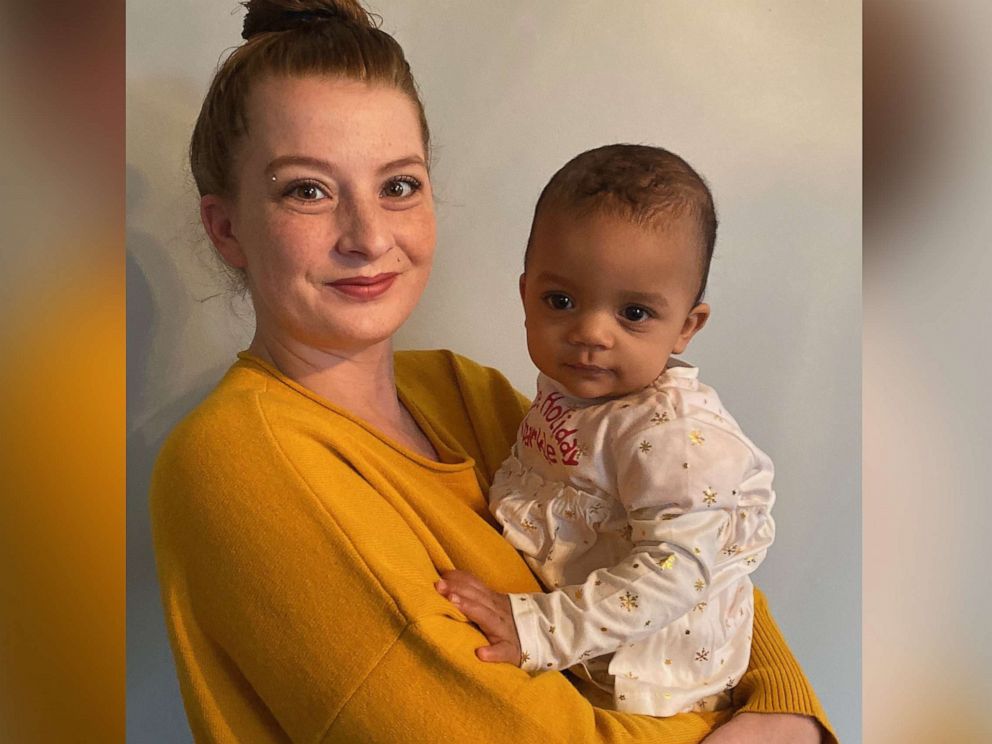Samantha Powell said she started abusing prescription painkillers when she was just 15. For years, she moved through rehab and detox facilities, methadone and suboxone clinics, looking for a way to overcome her dependency. She succeeded in quitting opioids by the time her 4-year-old son, Grant was born, but relapsed soon after.
In 2018, living in Nashville, Tennessee, she discovered she was pregnant again.
“When I searched for answers online the only thing that would come up is how women were being put in jail,” she said in an interview with ABC News. The fear of being charged and forcefully separated by her child deterred her from seeking any prenatal care.
After giving birth, nurses informed Powell that her daughter, Luna, was experiencing drug withdrawal symptoms. After spending two weeks with Luna in the hospital, Powell says Child Protective Services (CPS) took Luna away and didn’t allow her to meet the foster mom or see her daughter for a month. During that month, she started going through postpartum depression and even considered suicide, she said.
“It was devastating, I love my daughter. The guilt and the shame it’s something that you cannot describe,” she recalled, “I started thinking maybe my kid will be better without her addict mom.”
The number of women with opioid use disorder (OUD) at the time of delivery has quadrupled between 1999 and 2014, according to the CDC. At the same time, the number of states with punitive measures against pregnant women who abuse drugs more than doubled from 2000-2015 — an attempt to protect unborn babies and reduce opioid use in pregnancy, according to a recent study by the RAND Corporation.
In a twist, the study, published earlier this month, found that states with laws that penalize opioid use during pregnancy had a significantly higher number of infants born with drug withdrawal symptoms (57 cases per 10,000 births compared to 46 cases per 10,000 births – almost a 24 percent increase).

The study analyzed some 5 million live births in eight states – Arkansas, Arizona, Colorado, Kentucky, Massachusetts, Maryland, Nevada and Utah — which either adopted punitive or reporting measures regarding prenatal opioid use (one adopted both). The study found that merely reporting alone was not associated with higher incidence of drug withdrawal symptoms.
Babies exposed to opioids in the womb are likely to suffer from neonatal abstinence syndrome (NAS), a treatable and expected condition in children with mothers who used prescribed or non-prescribed opioids, methadone or naloxone, and even common antidepressants. The symptoms of withdrawal can range from mild irritability to severe health complications and NAS is estimated to cost hospitals annually over $500 million in 2014, according to the CDC.
“These policies are adding to the stigma and shame they feel, by discouraging them from getting the prenatal care and treatment they need,” Dr. Laura Faherty, the study’s lead author, said in an interview with ABC News.
Twenty-three states and the District of Columbia consider substance use during pregnancy to be child abuse under civil child welfare statutes and 25 states and DC require health care professionals to report suspected prenatal drug use, according to the Guttmacher Institute. But only 19 states, some of which also punish women for drug use during pregnancy, have created and funded drug treatment programs for pregnant women, making access to such programs very scarce.
“We would never punish someone for having diabetes or epilepsy during pregnancy but we treat substance use disorder as a moral failing instead of the chronic medical condition it really is,” Faherty said.
What is cutting edge about this new study says Lynn Paltrow, founder and executive director of National Advocates for Pregnant Women, is that it focuses on civil childcare interventions and recognizes the punitive nature of these social services. “In many states, urine samples are used as a parenting test,” says Paltrow, and a positive result will lead to loss of custody. Paltrow added, “The mother feels interrogated and presumed guilty of civil child abuse without evidence that they are truly unable to parent.”
Paltrow explains that this wave of legislation is founded in anti-abortion ideology that seeks to define fertilized eggs, embryos, and fetuses as separate persons. Currently, at least 38 states have fetal homicide laws, and in at least 29 states these laws apply to the earliest stages of pregnancy. The ambiguity of these laws grant enough flexibility for more stringent rules, impacting women’s reproductive autonomy and ability to seek medical attention.
Powell’s harrowing experience is one of thousands of untold stories of pregnant women who struggle with opioid use disorder during pregnancy. Now clean for almost a year, she admits her story may have turned out differently if it wasn’t for the right support she found along the way.
She says that if she continued working solely with CPS, she would’ve had to continue through a three-year process to receive full custody and would have gotten little to no guidance on how to overcome her addiction. CPS did not immediately respond to a request for comment.
Her situation began to change when she was referred to Vanderbilt Maternal Addiction Recovery Program. Vanderbilt’s holistic and comprehensive resources provide prenatal care with addiction treatment for women like Powell who face challenges of new motherhood and recovery.
“I’ve gotten clean several times, but I never had the support system and foundation to build my life like I do now,” she said. “Vanderbilt has allowed me to be honest in a way I’ve never been able to before, and taught me to trust myself.”
Dr. Elizabeth E. Krans, a doctor at the Pregnancy Recovery Center at Magee-Womens Hospital in Pittsburgh, helps women like Powell who struggle with addiction during pregnancy. Krans explained that medication is only a component of the recovery program for pregnant women suffering from substance use disorder.
“We must invest in patients as people and as moms and take into account the larger family unit. We care about understanding a woman’s life as a whole,” she said, referring to their holistic, trauma informed approach that integrates behavioral counseling and peer support. Dr. Davida Schiff, Medical Director of the HOPE clinic, recovery treatment program for pregnant women at Massachusetts General Hospital agrees. She says that punitive policies do not recognize that “pregnancy is actually a highly motivating time to engage women in treatment.”
Powell is particularly thankful for Vanderbilt’s aid in connecting her with Tennessee’s Safe Baby Court program. Enacted in 2017, this unique court system aims to reward progress with speedier exits from the system. Powell says that the structure of the program has motivated her to stay clean. “I now have [Luna] 4 days out of the week and it feels good to accomplish things and getting more time with her,” she said.
She is also spearheading a new peer-support program at the clinic that helped turn her life around, looking to empower and inspire women going through similar challenges.“You can bounce back, and I am proof of it,” but recovery will always be a part of her life she said.
By Christmas she will have full custody of Grant and Luna. Powell is also working to build a strong connection with her eldest son, who was born when she was only 20 years old. He currently lives with his grandparents, but says her relationship with him continues to improve.
In January, she will celebrate a full year of recovery. “It’s been a hell of a year, but I’m very proud, stability makes me really happy,” she said.
Lately, whenever there is a trigger and she is reminded of her past struggles, she thinks things through to the end. “If I’m not responsible for myself, I won’t have what I want in my life, which is my family,” she said.
Eden David studies neuroscience at Columbia University. She is matriculating into medical school in 2020 and is a member of the ABC News’ Medical Unit.
Source: Read Full Article



